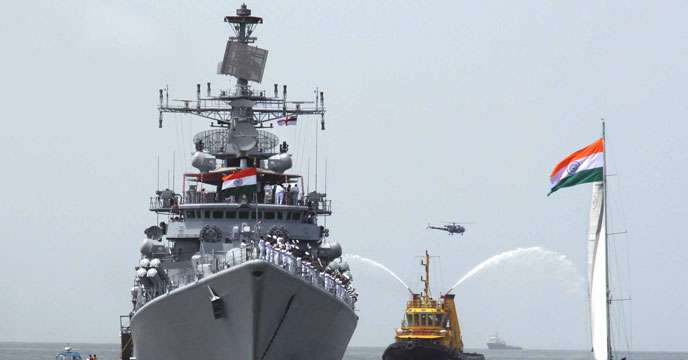

By Commodore Anil Jai Singh, IN (Retd)
New Delhi. 14 August 2022. As India celebrates 75 years of its independence with the Azadi ka Amrit Mahotsav, one is reminded of Pandit Jawaharlal Nehru’s stirring words about India fulfilling its tryst with destiny. In the three quarters of a century since then, the country has come a long way towards fulfilling that prophecy despite some daunting challenges that have tested the nation’s mettle ; infact, India has emerged stronger from these and is poised on a transformational cusp as a 21st century power. Therefore, it has much to celebrate and much to look forward to. The Indian Navy, as a microcosm of the nation, has traversed a similar trajectory.
The hauling down of the Union Jack on the ships of the Royal Indian Navy for the last time on 14 August 1947 marked the end of colonial rule and the hoisting of the tricolour for the first time on the morning of 15 August 1947 heralded a new beginning. Even though it remained the ‘Royal Indian Navy’ till India became a republic on 26 January 1950, it was so only in name. Infact, the famous Naval Mutiny of 1946 that began in the sailors barracks at INS Angre in Mumbai is often said to have been the last straw on the British back.
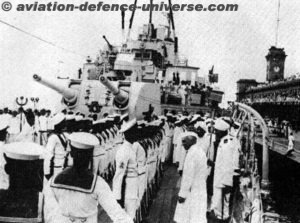
At Independence, a partitioned India was left with 37 ships comprising just three sloops with the rest being coastal defence craft and small gun boats. It is from these humble beginnings that the Indian Navy has grown into one of the top five maritime forces in the world, achieving several significant milestones along the way. Recounting all of these would take an entire book. I have hazarded to highlight a few that I believe have shaped the navy’s growth and will continue to influence the navy’s future trajectory.
The Visionaries.
The Royal Navy, which treated the Indian Ocean as a British lake believed that the navy of newly independent India will operate mainly in a supporting role. However, India’s naval planners thought otherwise. Within a few months of gaining independence, they had prepared a capability plan which was ambitious in scope and visionary in its outlook. It envisioned India as a future maritime power that would require a commensurate blue water navy to protect its national interests beyond its borders. The plan, which included the acquisition of three aircraft carriers and three submarines also got a nod from the government. For a navy with barely enough brown water capability, this was very ambitious thinking. Hence no praise is enough for these visionaries who not only thought big but instilled the confidence in future generations to continue doing so.
The 1950s- Consolidation.
The 1950s was a period of consolidation. Prime Minister Nehru and legendary intellectuals like Sardar KM Pannikar understood India’s maritime security imperatives. These were encapsulated in the Prime Minister’s famous words “To be secure on land, we must be supreme at sea”. In 1948, the navy acquired its first cruiser, INS Delhi (formerly HMS Achilles of the Battle of River Plate fame) and its second cruiser, INS Mysore was commissioned in 1958. Various destroyers and frigates, mainly second-hand and from the UK were also acquired during this period and formed the nucleus of an emerging blue water force.
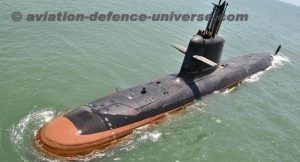
The 1960s – A 3-dimensional Force
In the late 1950s, barely 10 years after independence, the acquisition of an aircraft carrier was approved. The Navy chose the Majestic class light aircraft carrier, Hercules, displacing about 20000 tonnes. Initially laid down in 1943, it was never completed as the Second World war came to an end in 1945. After extensive refurbishment, it was commissioned as the INS Vikrant on 4th March 1961 and heralded the inception of the Fleet Air Arm and carrier-borne aviation in the Indian Navy.
The mid and late 1960s witnessed another transformation; India’s shift from the UK to the Soviet Union for its naval acquisitions. The Russian Premier Nikita Khruschev’s offered Soviet equipment including submarines on much better terms than the UK, which had also refused India its Oberon class submarines. This led to the acquisition of the Petya class ASW corvettes – mid-sized, powerfully armed, agile platforms and the Osa class missile boats, and most importantly, submarines, amongst others.
It was on a cold 8th of December morning in Riga, USSR that the Indian Navy became truly three-dimensional navy with the commissioning of INS Kalvari, a Foxtrot class submarine of Soviet design. Three decades after the first plan had approved the acquisition of submarines, the navy had finally acquired an undersea warfighting capability. The submarine acquisition saga is another story by itself. From being classified as an offensive platform which had no place in India’s pacifist foreign policy to the UK’s denial of the Oberon class coinciding with the Soviet offer, the submarines were finally here. Kalvari was followed by three more of the same class within a space of two years.
It is remarkable how these acquisitions went on to play a stellar role in India’s decisive rout of Pakistan and the liberation of Bangladesh in December 1971 in what is termed India’s and the navy’s finest hour.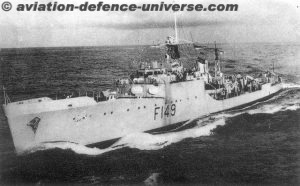
The Navy’s Finest Hour
The navy had been smarting from the peripheral role it was made to play in the 1965 Indo-Pak war where, emboldened by the IN’s absence, the Pakistan Navy had carried out audacious attacks in Indian waters off Dwarka. The reasons for the navy’s non-participation are not clear to this day; perhaps it was New Delhi’s sea blindness or a crisis of leadership where senior commanders were barely getting a handle on the land battle itself as is borne out by numerous historical accounts of that war.
As war clouds loomed with our western neighbour unleashing a genocidal carnage in its eastern part forcing India to intervene, India’s three-dimensional navy immediately went on the offensive and within a week of commencement of hostilities had achieved complete sea control of the western and eastern seaboards. It wreaked not only physical destruction but also destroyed the Pakistan navy psychologically to an extent where the PN directed its ships to stay in harbour to avoid further annihilation. On the second night of the war itself, the missile boats supported by the Petyas, launched an audacious attack on Karachi harbour which caught the Pakistan navy flat-footed, in total disarray and with its premier warships in tatters. Karachi, Pakistan’s only deep- water port was aflame and the war at sea was all but won. The extraordinary feat of the missile boats has been duly acknowledged with the 4th of December now celebrated as the Navy Day.
On the eastern seaboard, INS Vikrant, operated from Port Blair in a tactical masterstroke, while the Pakistani submarine Ghazi lay in wait for it off Visakhapatnam and met a watery grave there. Vikrant and its accompanying Battle Group established complete maritime dominance in the Bay of Bengal, choked Pakistan’s supply lines to its army in the east while its aircraft struck decisive blows at the East Pakistani controlled ports, thus severely degrading Pakistan’s war-fighting capability and precipitating the liberation of Bangladesh. Such was the Indian Navy’s morale that even the looming threat of intervention by the mighty US Seventh Fleet, led by the nuclear powered 75000 tonne aircraft carrier USS Enterprise, then the most powerful warship in the world, was brushed aside with the contempt it deserved. Rarely ever in the annals of maritime warfare had such a young navy operated with such aggression and decisive determination to achieve total maritime dominance over a well-armed adversary.
The submarines were effectively deployed on operational patrols to deter the enemy from advancing beyond a point.
Indigenisation – the Mantra for the Future.
While the country was still celebrating this decisive victory, the navy was looking ahead. An awareness of its role in the country’s future led it to encourage a transition from a buyer navy into a builder navy. It was painstaking but the navy persevered as warship construction is a complex process and requires diligence, patience and a sense of purpose. The commissioning of INS Nilgiri marked a watershed moment in the country’s industrial, and shipbuilding capability. Nilgiri was not the first indigenously built warship – that distinction goes to INS Ajay- but was the largest till then. The navy’s efforts at achieving ‘aatmnirbharta’ (self-reliance), the government’s latest buzzword, hence predates the present by over five decades. These efforts have borne fruit to an extent where all 39 ships and submarines on order, except two, are being built at Indian shipyards. These include an indigenously designed aircraft carrier and a series of nuclear-powered ballistic missile submarines, both of which are the gold standard in shipbuilding. Indigenous ship and submarine construction is ably supported by an indigenous design capability vested in the Warship Design Bureau.
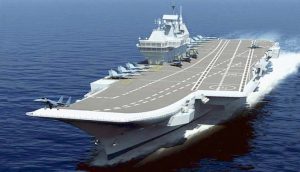
The Next Military Power ?
In its issue dated April 3, 1989, Time magazine’s cover featured a close-up photo of a Godavari class guided missile frigate with a story titled “Super India : The Next Military Power”. This was an overview of India’s military expansion in the 1980s with the focus on the navy, that had grown exponentially in its power projection capability and the punch it packed. In 1980, INS Rajput, a Kashin class guided- missile destroyer was commissioned. This was probably the most powerful ship of its kind in the Indian Ocean at the time and presented a formidable sight. Rajput was followed by four more of the same class.
In April 1986, the Indian Navy commissioned INS Sindhughosh, the first of the Kilo class submarines, at that time the most potent conventional undersea platform in the powerful Russian navy. On 22 September the same year, the first of the Type 209 submarines, INS Shishumar was commissioned at Kiel in erstwhile West Germany. In the span of a few months, the Indian Navy had, arguably, the best submarines from either side of ideological Cold war divide and by far the most powerful undersea warfare platforms in the Indian Ocean. By the end of the decade, the IN had added five more Kilo class and one more Type 209 submarine. The blue water capability was complemented by the acquisition of the Veer class missile corvettes and the Karwar class minesweepers and some amphibious craft as well.
Naval aviation witnessed the arrival of the Sea Harrier jets from the UK that augmented the aircraft carrier’s offensive power. The induction of the TU-142M Long Range Maritime Patrol (LRMP) aircraft from the Soviet Union added to the country’s anti-submarine and ISR capability from the air. It was the commissioning of Viraat in 1987 that was the crowning moment of the decade. The former HMS Hermes, she was resurrected from the dead, having been decommissioned after her return as the flagship of the victorious Royal Navy Task Force that inflicted a crushing defeat on Argentina in the Falklands war of 1982.
Another significant milestone was the acquisition of the nuclear attack submarine, INS Chakra. A Soviet Charlie 1 class submarine on lease for three years, it provided the Indian Navy valuable experience in operating and maintaining nuclear platforms. The Indian Navy’s tryst with nuclear power had begun.
From an operational perspective the Indian Navy participated in quelling the coup attempt in the Maldives and played a significant role in Operation Pawan in Sri Lanka. It was therefore no surprise to see Indian Navy featuring on the cover of Time magazine.
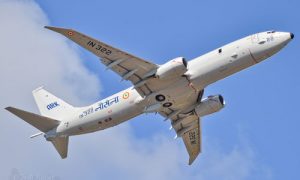
Much More with Much Less.
The 90s began on a dismal note. The disintegration of the Soviet Union and the consequent collapse of its huge military-industrial complex affected India adversely in more ways than one. The dependence on Soviet spares and support became a millstone around the navy’s neck. At the same time, the headwinds buffeting the Indian economy were taking a toll. ‘Much more with much less’ became the official credo of the navy, though it was easier said than done. Despite this, in 1992 the navy commissioned its first ever indigenously built submarine, INS Shalki. A second one followed two years later. Instead of consolidating these skills, dirty Indian politics reared its ugly head leading to the termination of the programme, costly decision that we ate paying for even today.
In 1997, the Navy commissioned INS Delhi, the first of the indigenously built Project 15 guided missile destroyers. The construction of these large, sophisticated vessels marked the coming of age of the country’s indigenous ship design and building capability. The decade ended as it had begun with the navy now battling the adverse effects of the sanctions imposed by the west following the nuclear tests of 1998.
New Millenium- New Challenges .
In 2001, India hosted its first ever International Fleet Review in Mumbai. Termed the ‘Bridges of Friendship’, it projected ‘India’s relevance in the Post Cold War period’ and to display the Indian Navy’s confidence and capability as a naval power of reckoning. 29 countries participated in this event which was a resounding success.
However, later that year itself, two events transformed the regional maritime seascape. The tragic events of 26 September in the USA and the dastardly attack on India’s Parliament on 11 December. While the former galvanised the USA into launching a Global War on Terror (GWOT), the latter led to the Indian Armed Forces getting fully mobilised (Op Parakram) against Pakistan for an eventuality that never came. However, despite not a single shot being fired, the Indian Navy’s formidable presence in the north Arabian Sea projected India’s ability to strangle Pakistan economically, into submission.
The tsunami on Boxing Day 2004, was another defining event that was unprecedented in intensity and the devastating loss of life and property. The Indian Navy responded magnificently and deployed 19 ships and more than 15 aircraft the same afternoon with relief and medical support not only to the affected parts of the country but to Sri Lanka and Maldives as well. The IN ‘s prompt action provided succour and support to the affected areas much before other navies were able to reach. This won the IN international plaudits and reinforced its reputation as the preferred security provider in the region.
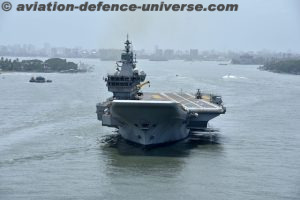
Mayhem in Mumbai
India learnt a bitter lesson about the severity of the non-traditional threat on the 26th of November 2008. A motley bunch of young men in a small fishing boat from across the border were able to land at Mumbai’s iconic Gateway of India, (a bustling location teeming with people enjoying an evening out), fan out across the city and carry out a series of devastating attacks on carefully selected targets including two luxury hotels , the busy Chhatrapati Shivaji railway terminus and a Jewish centre. It cruelly exposed the country’s inadequacy in responding to a crisis across the entire decision making apparatus. It took almost 96 hours for the situation to be brought under control with one of the perpetrators finally being arrested. What was even more galling was that the country, despite being a victim of cross- border terrorism for over three decades, including maritime terrorism (the bomb blasts in Mumbai in 1993) was found so badly wanting in its response. The aftermath of this attack led to a complete restructuring of the nation’s coastal security architecture which, hopefully will be able to respond better should it ever face such a crisis again. It also highlighted the requirement of ensuring a secure maritime neighbourhood and has led to various capacity building measures being introduced.
The last 10 years
The last decade has further established India’s credentials as a blue water navy, despite resource constraints and widening capability deficits. The commissioning of INS Vikramaditya in 2013 provided a boost to carrier strike capability. In 2016, the Navy held its second International Fleet Review at Visakhapatnam in which more than 50 navies participated. The decade also witnessed a successful deterrence patrol by the indigenously built SSBN INS Arihant in November 2018. This was significant as it established India’s nuclear triad.
The Present… and Beyond
The shift in the global geopolitical centre of gravity to the Indo-Pacific, the rise of China in the last two decades and the changing nature of the maritime threat has also re-oriented the role of navies and coast guards to factor these challenges in addition to their warfighting role which remains their raison d’etre. The increasing frequency of non-traditional security challenges and the effects of climate change on the oceans and coastal communities will have major implications on maritime security in the future.
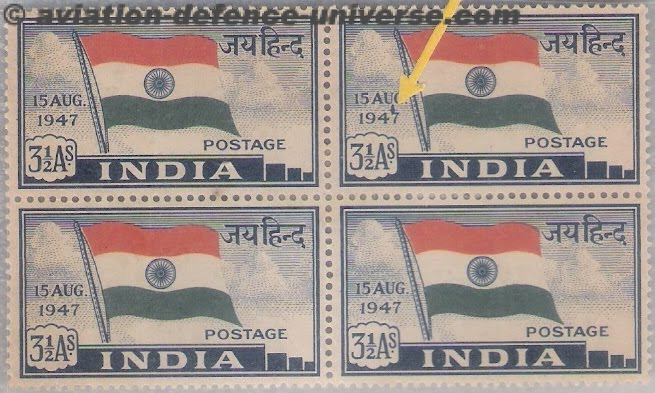
As independent India turns 75, the Navy is well poised to shape the maritime contours of India’s strategic posture. It is embracing technology and is focussing its attention on ensuring a favourable maritime situation for India in the region. It has maintained an impressive operational tempo and has an impressive Maritime Domain Awareness (MDA) capability. It is developing global information sharing mechanisms and is focussing on a networked battlespace. Disruptive technologies, be it unmanned and autonomous platforms, artificial intelligence, machine learning etc are being developed as effective force multipliers and are integral to the navy’s future plans of augmenting its traditional military hardware. The space and cyber domains are getting attention with the navy being the first service with a dedicated satellite.
The forthcoming commissioning of Vikrant, the country’s first indigenously built aircraft carrier is a symbol of the country’s progress on its path of ‘aatmnirbharta’ and the Indian Navy’s contribution to this effort as it continues to be the nation’s maritime bulwark in the country’ tryst with destiny.
(Commodore Anil jai Singh, a submarine veteran is presently the Vice President of the Indian Maritime Foundation and an Honorary Adjunct Fellow of the National Maritime Foundation)























































































































